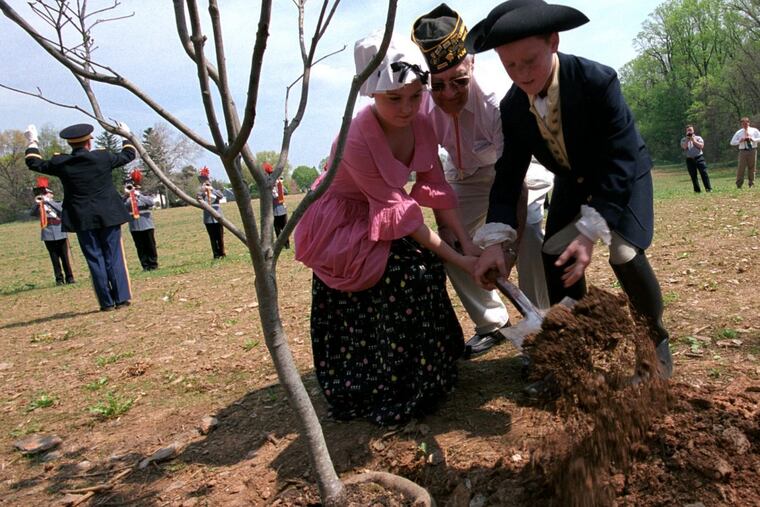Advocates shoot for moon in fight to make Paoli Battlefield national landmark
Supporters of the bid to become a national historic landmark have made the most of the long, slow process by finding more evidence of the national significance of the site.

Supporters have uncovered fresh evidence to buttress their case for making the Main Line site of a Revolutionary War battle a national landmark, but ironically, a major victory they won two decades ago might have slowed progress.
To spare the land from bulldozers, in 1999 the Paoli Battlefield Preservation Fund purchased the 40-acre tract, where British forces killed at least 53 Americans and wounded more than 150 in 1777, and secured a place on the National Register of Historic Places as a site of "local" significance.
With development pressures building, pursuing that designation saved valuable time as opposed to the more-prolonged process of proving "national" significance. "We were up against the gun," Bruce Knapp, the fund's president, said.
But after advocates applied two years ago to make the battlefield a National Historic Landmark, they found they had to overcome the federal government's skepticism about so knighting Paoli when two decades before supporters had argued for its "local" importance. To make the elite list of the nation's roughly 2,500 landmark sites, the government has to deem a property significant to all Americans, such as Washington's Headquarters in Valley Forge National Historical Park.
 Making the battlefield a landmark would be significant for raising grant money and local tourism.
Making the battlefield a landmark would be significant for raising grant money and local tourism.
Knapp compared his group's efforts to jump from the register's local designation to landmark status as akin to launching a space mission to Mars without first trying to land on the moon.
So his group has decided to shoot for the moon. It now is seeking a spot on the register's list of nationally significant places, using some of a nearly $60,000 grant from the American Battlefield Protection Program. Earning a place on the register's "national" list of more than 8,000 sites likely would make designation as a national landmark an easier sell. Knapp's group already would have completed most of the necessary work.
Because of the additional research his group has commissioned, historians have found hundreds of references in the 1700s, 1800s, and early 1900s to the Paoli Massacre and the battle cry that followed: "Remember Paoli!"
"The United States has a unique tradition of following this template of 'Remember Paoli,' " Knapp said, mentioning similarly formatted battle cries in the War of 1812, the Spanish-American War, and the world wars.
When the fund members submitted their application to a landmark committee in March 2015, they had dreamed that the U.S. Department of the Interior would name Paoli Battlefield a landmark before the April opening of Philadelphia's Museum of the American Revolution, thus luring history buffs visiting the area.
But Knapp and his associates are a patient bunch. He said they are "amazed and pleased" with the amount of new information they have uncovered in the last several years. He said his group won't stop until Paoli Battlefield achieves national historic landmark status.
"It's part of what this site deserves," he said. "We'll keep digging up stuff."